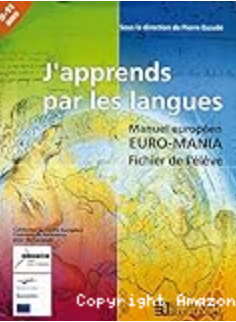 Euromania
Euromania
The Euromania project offers a school textbook for subject-based learning in Mathematics, Science, Technology and History for upper primary education (age: 9 to 12) and focuses on building bridges between the language of schooling and languages of the same language family, here Romance languages. The scenario proposes a vertical progression from upper primary (ISCED1) to lower secondary education (ISCED2). Furthermore, the scenario promotes horizontal transitions based on intercomprehension Intercomprehension
Intercomprehension
In the approach termed Intercomprehension between related languages the learner works on two or more languages of the same linguistic family (Romance, Germanic, Slavic languages, etc.) in parallel. One of these languages is already known, being either the learner’s mother tongue, or the language of education, or even another language having been learnt previously. In this approach there is a systematic focus on receptive skills, as the development of comprehension is the most tangible way of using the knowledge of a related language to learn a new one. Of course, this does not exclude some added benefits for productive skills. Available here. between Romance languages.